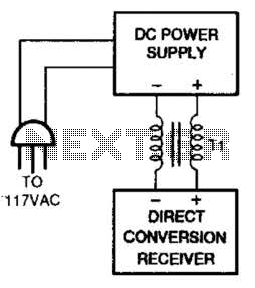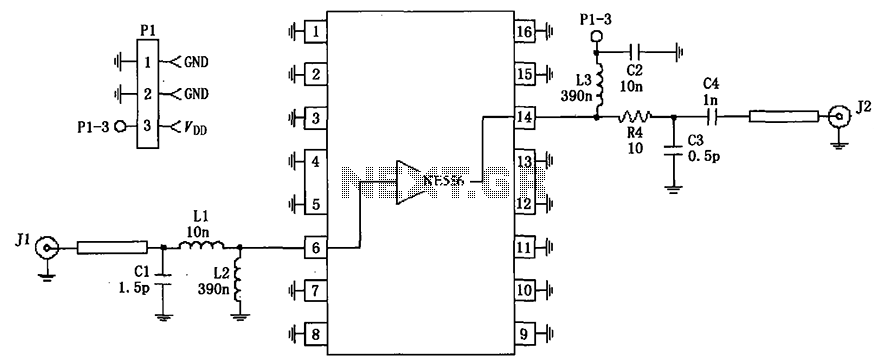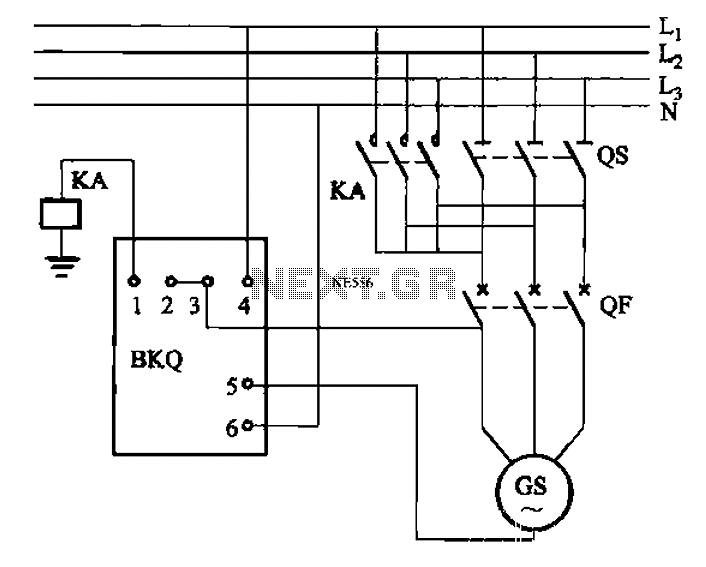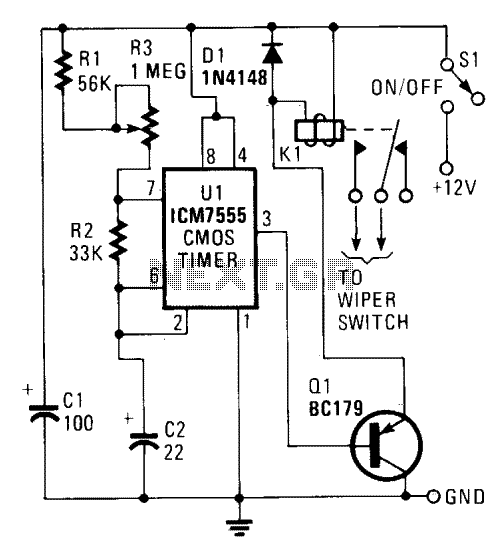
Hum Reducer For Direct-Conversion Receivers Circuit

One solution for AC power line hum and ripple, which is caused by leakage current, is to utilize a well-regulated and filtered 9 to 18 VDC power supply that incorporates a balancing choke (Tl in this illustration) between the power supply and the DCR.
A well-regulated and filtered DC power supply is critical in minimizing the effects of AC power line hum and ripple, which can adversely affect the performance of sensitive electronic circuits. The voltage range of 9 to 18 VDC is commonly used in various applications, making this solution versatile.
The incorporation of a balancing choke serves to further mitigate the undesirable effects of leakage current. A balancing choke, also known as a common-mode choke, is designed to suppress high-frequency noise and ripple by providing impedance to differential and common-mode signals. This component is placed in series with the power supply output, effectively filtering out unwanted AC components while allowing the desired DC voltage to pass through.
In a typical schematic, the power supply output connects to the input of the balancing choke, which is then connected to the Direct Current Resistance (DCR) load. The choke consists of two coils wound on a magnetic core, which helps in creating a magnetic field that opposes the noise currents, thus improving the overall power quality delivered to the load.
The design of the power supply should also include adequate filtering capacitors to smooth out any residual ripple voltage. These capacitors should be rated for the appropriate voltage and capacitance values to ensure effective filtering. Additionally, the power supply circuitry may incorporate voltage regulation components, such as linear regulators or switching regulators, to maintain a stable output voltage within the specified range, regardless of variations in the input voltage or load conditions.
In summary, utilizing a well-regulated and filtered 9 to 18 VDC power supply with a balancing choke effectively addresses the issues of AC power line hum and ripple, ensuring stable and clean power delivery to sensitive electronic devices. One cure for ac power line hum and ripple (caused by leakage current) is to use a well-reg-ulated and filtered 9- to 18-Vdc power supply with a balancing choke (Tl in this illustration) between the power supply and the DCR.
A well-regulated and filtered DC power supply is critical in minimizing the effects of AC power line hum and ripple, which can adversely affect the performance of sensitive electronic circuits. The voltage range of 9 to 18 VDC is commonly used in various applications, making this solution versatile.
The incorporation of a balancing choke serves to further mitigate the undesirable effects of leakage current. A balancing choke, also known as a common-mode choke, is designed to suppress high-frequency noise and ripple by providing impedance to differential and common-mode signals. This component is placed in series with the power supply output, effectively filtering out unwanted AC components while allowing the desired DC voltage to pass through.
In a typical schematic, the power supply output connects to the input of the balancing choke, which is then connected to the Direct Current Resistance (DCR) load. The choke consists of two coils wound on a magnetic core, which helps in creating a magnetic field that opposes the noise currents, thus improving the overall power quality delivered to the load.
The design of the power supply should also include adequate filtering capacitors to smooth out any residual ripple voltage. These capacitors should be rated for the appropriate voltage and capacitance values to ensure effective filtering. Additionally, the power supply circuitry may incorporate voltage regulation components, such as linear regulators or switching regulators, to maintain a stable output voltage within the specified range, regardless of variations in the input voltage or load conditions.
In summary, utilizing a well-regulated and filtered 9 to 18 VDC power supply with a balancing choke effectively addresses the issues of AC power line hum and ripple, ensuring stable and clean power delivery to sensitive electronic devices. One cure for ac power line hum and ripple (caused by leakage current) is to use a well-reg-ulated and filtered 9- to 18-Vdc power supply with a balancing choke (Tl in this illustration) between the power supply and the DCR.





